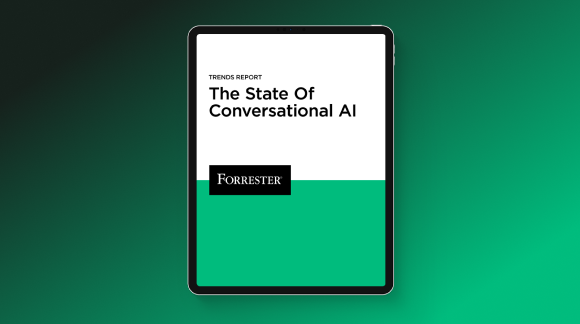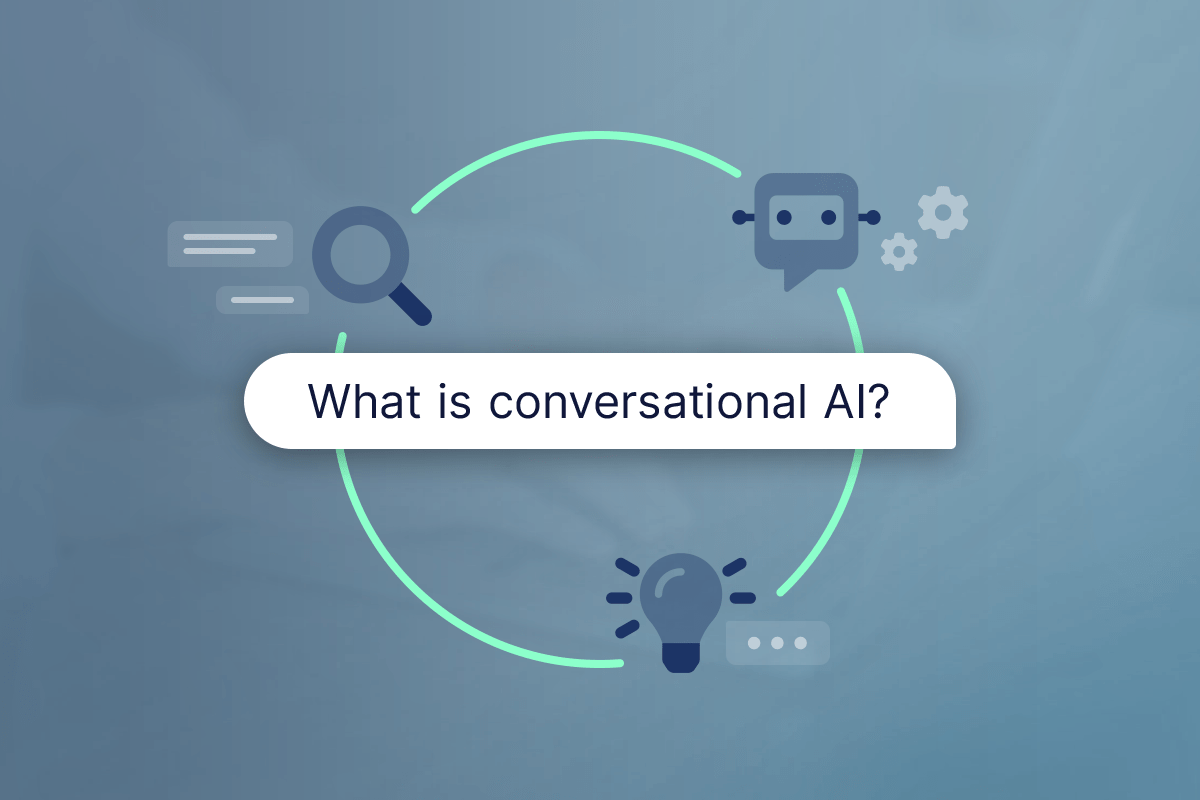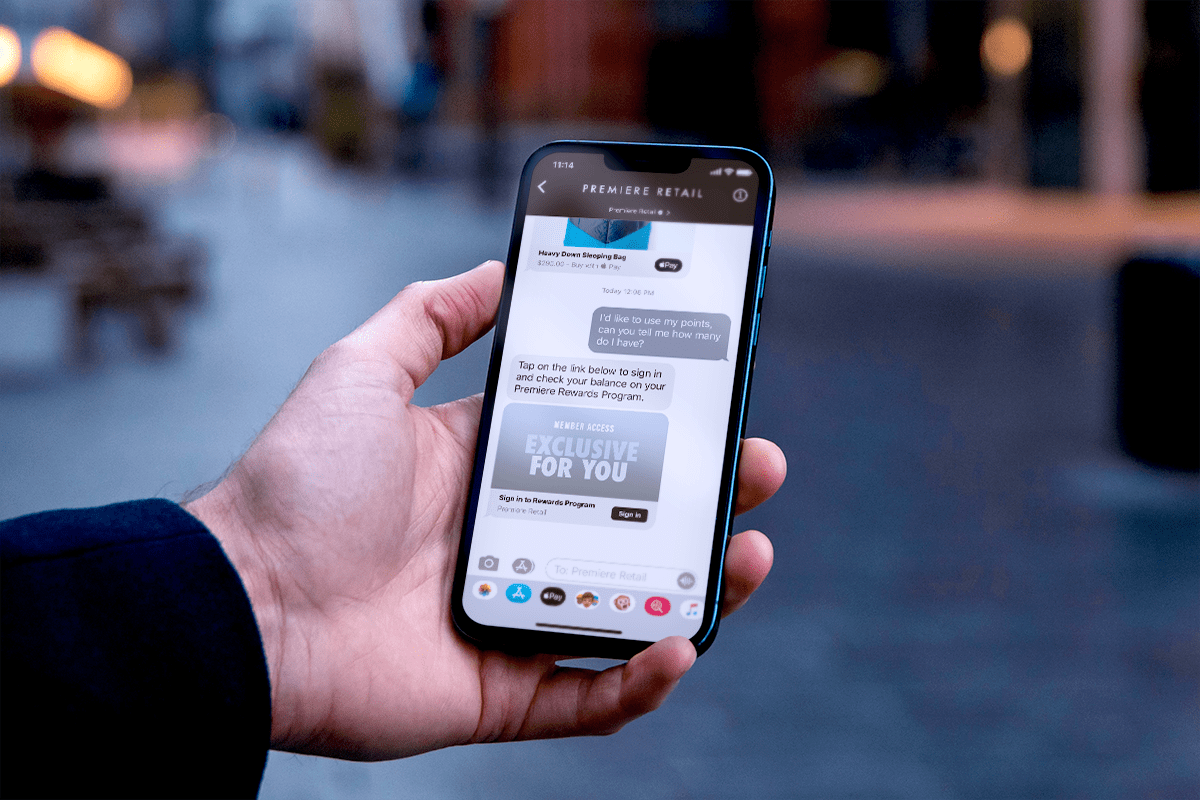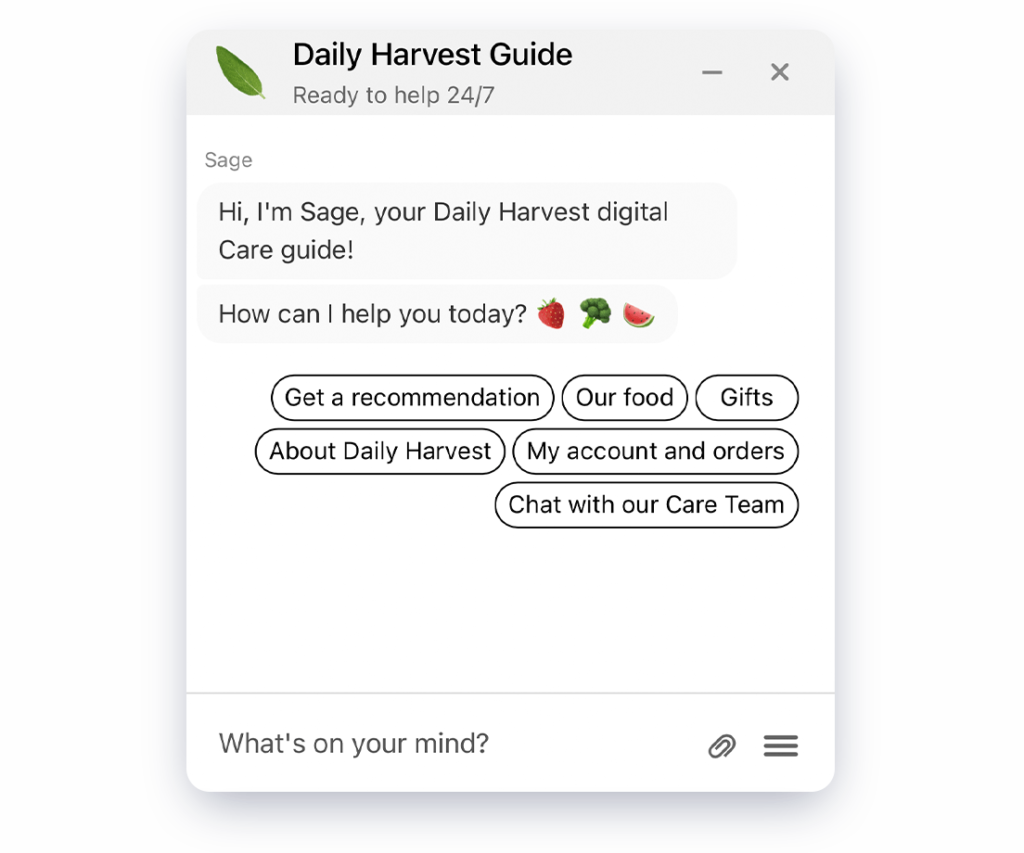Movies may have twisted our expectations of artificial intelligence—either giving us extremely high expectations or making us think it’s ready to wipe out humanity.
But the reality isn’t on those levels. In fact, you’re already using AI in your daily life—but it’s so ingrained in your technology you probably don’t even notice. Netflix and Spotify both use AI to personalize your content recommendations. Siri, Alexa, and Google Assistant use it as well.
Conversational AI, like what Quiq uses to power our chatbots, takes artificial intelligence to the next level. See what it is and how you can use it in your business.
What is conversational AI?
Conversational artificial intelligence (AI) is a collection of technologies that create a human-like experience. It combines natural language processing (NLP), machine learning, and other technologies to enhance streamlined conversations. This can be used in many applications, like chatbots and voice (like Siri and Alexa). The most common use case for conversational AI in the business-to-customer world is through an AI chatbot messaging experience.
Unlike rule-based chatbots, those powered by conversational AI generate responses and adapt to user behavior over time. Rule-based chatbots were also limited to what you put in them—meaning if someone phrased a question differently than you wrote it (or used slang/colloquialisms/etc.), it wouldn’t understand the question. Conversational AI can also help chatbots understand more complex questions.
Putting technical terms in context.
Companies throw around a lot of technical terms when it comes to artificial intelligence, so here are what they mean and how they’re used to improve your business.
Rules-based chatbots: Earlier chatbot iterations (and some current low-cost versions) work mainly through pre-defined rules. Your business (or service provider) writes specific guidelines for the chatbot to follow. For example, when a customer says “Hi,” the chatbot responds, “Hello, how may I help you?”
Another example is when a customer asks about a return. The chatbot is programmed to give a specific response, like, “Here’s a link to the return policy.”
However, the problem with rule-based chatbots is that they can be limiting. It only knows how to handle situations based on the information programmed into it. So if someone says, “I don’t like this product, what can I do?” and you haven’t planned for that question, the chatbot won’t have a response.
Machine learning: Machine learning is a way to combat the problem posed above. Instead of giving the chatbot specific parameters complete with pre-written questions and answers, machine learning helps chatbots make decisions based on the information provided.
Machine learning helps chatbots adapt over time based on customer conversations. Instead of giving the bot specific ways to answer specific questions, you show it the basic rules, and it crafts its own response. Plus, since it means your chatbot is always learning, it gets better the longer you use it.
Natural language processing: As humans and speakers of the English language, we know that there are different ways to ask every question. For example, a customer who wants to know when an item is back in stock may ask, “When is X back in stock?” or they might say, “When will you get X back in?” or even, “When are you restocking X?” Those three questions all mean the same thing, and as humans, we naturally understand that. But a rules-based bot must be told that those mean the same things, or they might not understand it.
Natural language processing (NLP) uses AI technology to help chatbots understand that those questions are all asking the same thing. It also can determine what information it needs to answer your question, like color, size, etc.
NLP also helps chatbots answer questions in a more human-like way. If you want your chatbot to sound more human (and you should), then find one that uses NLP.
Web-based SDK: A web-based SDK (that’s a software development kit for non-developers) is a set of tools and resources developers use to integrate programs (in this case, chatbots) into websites and web-based applications.
What does this mean for your chatbot? Context. When a user says, “I need help with my order,” the chatbot can use NLP to identify “help” and “order.” Then it can look back at previous conversations, pull the customers’ order history, and more—if the data is there.
Contextual conversations are everything in customer service—so this is a big factor in building a successful chatbot using conversational AI. In fact, 70% of customers expect anyone they’re speaking with to have the full context. With a web-based SDK, your chatbot can do that too.
The benefits of conversational AI.
Using chatbots with conversational AI provides benefits across your business, but the clearest wins are in your contact center. Here are three ways chatbots improve your customer service.
24/7 customer support.
Your customer service agents need to sleep, but your conversational AI chatbot doesn’t. A chatbot can answer questions and contain customer issues while your contact center is closed. Any issues they can’t solve, they can pass along to your agents the next day. Not only does that give your customers 24/7 service, but your agents will have less of a backlog when they return to work.
Faster response times.
When your agents are inundated with customers, an AI chatbot can pick up the slack. Send your chatbot in to greet customers immediately, let them know the wait time, or even start collecting information so your agents can get to the root of the problem faster. Chatbots powered with AI can also answer questions and solve easy customer issues, skipping human agents altogether.
For more ways AI chatbots can improve your customer service, read this >
More present customer service agents.
Chatbots can handle low-level customer queries and give agents the time and space to handle more complex issues. Not only will this result in better customer service, but agents will be happier and less stressed overall.
Plus, chatbots can scale during your busy seasons. You’ll save on costs since you won’t have to hire more agents, and the agents you have won’t be overworked.
How to make the most of AI technology.
Unfortunately, you can’t just plug and play with conversational AI and expect to become an AI company. Just like any other technology, it takes prep work and thoughtful implementation to get it right—plus lots of iterations.
Use these tips to make the most of AI technology:
Decide on your AI goals.
How are you planning on using conversational AI? Will it be for marketing? Customer service? All of the above? Think about what your main goals are and use that information to select the right AI partner.
Choose the right conversational AI platform.
Once you’ve decided on how you want to use conversational AI, select the right partner to help you get there. Think about aspects like ease of use, customization, scalability, and budget.
Design your chatbot interactions.
Even with artificial intelligence, you still have to put the work in upfront. What you do and how you do it will vary greatly depending on which platform you go with. Design your chatbot conversations with these things in mind:
- Your brand voice
- Personalization
- Customer service best practices
- Logical conversation flows
- Concise messages
Build a partnership between agents and chatbots.
Don’t launch the chatbot independently of your customer service agents. Include them in the training and launch, and start to build a working relationship between the two. Agents and chatbots can work together on customer issues, both popping in and out of the conversation seamlessly. For example, a chatbot can collect information from the customer upfront and pass it to the agent to solve the issue. Then, when the agent is done, they can bring the chatbot back in to deliver a customer survey.
Test and refine.
Sometimes, you don’t know what you don’t know until it happens. Test your chatbot before it launches, but don’t stop there. Keep refining your conversations even after you’ve launched.
What does the future hold for conversational AI?
There are many exciting things happening in AI right now, and we’re only on the cusp of delving into what it can really do.
The big prediction? For now, conversational AI will keep getting better at what it’s already doing. More human-like interactions, better problem-solving, and more in-depth analysis.
In fact, 75% of customers believe AI will become more natural and human-like over time. Gartner is also predicting big things for conversational AI, saying by 2026, conversational AI deployments within contact centers will reduce agent labor costs by $80 billion.
Why should you jump in now when bigger things are coming? It’s simple. You’ll learn to master conversational AI tools ahead of your competitors and earn an early competitive advantage.
How Quiq does conversational AI.
To ensure you give your customers the best experience, Quiq powers our entire platform with conversational AI. Here are a few stand-out ways Quiq uniquely improves your customer service with conversational AI.
Design customized chatbot conversations.
Create chatbot conversations so smooth and intuitive that it feels like you’re talking to a real person. Using the best conversational AI techniques, Quiq’s chatbot gives customers quick and intelligent responses for an up-leveled customer experience.
Help your agents respond to customers faster.
Make your agents more efficient with Quiq Compose. Quiq Compose uses conversational AI to suggest responses to customer questions. How? It uses information from similar conversations in the past to craft the best response.
Empower agent performance.
Tools like our Adaptive Response Timer (ADT) prioritizes conversations based on how fast or slow customers respond. The conversational AI platform also uses AI to analyze customer sentiment to give extra attention to customers who need it.
This is just the beginning.
This is just a taste of what conversational AI can do. See how Quiq can apply the latest technology to your contact center to help you deliver exceptional customer service.





